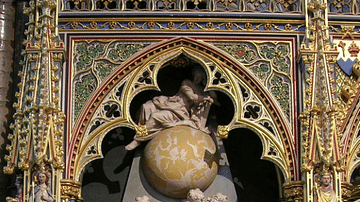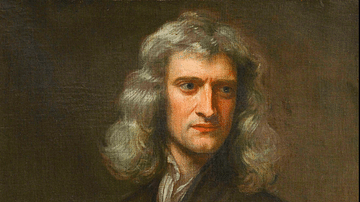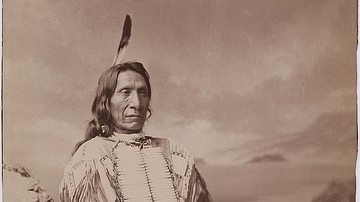Search Images
Browse Content (p. 233)

Image
Medieval Carpenters' Tools
A board showing the carpentry tools commonly used in the Middle Ages in Europe. On display at Guédelon castle in Treigny, Burgundy, France.

Image
Tomb of Isaac Newton
The tomb of the mathematician and physicist Isaac Newton (1642-1727) in Westminster Abbey, London.

Image
Newton Commemorative Medal
A gilded commemorative medal showing the mathematician and physicist Isaac Newton (1642-1727). Made in England in 1726. (Science Museum, London)

Image
Newton's Copy of Principia
The personal copy of Isaac Newton's (1642-1727) own work Principia in which he outlines his three laws of motion and universal law of gravity. (Wren Library, Trinity College, Cambridge)

Image
Isaac Newton by Kneller
A 1689 oil on canvas portrait by Godfrey Kneller of Isaac Newton (1642-1727).

Image
Newton's Prism
Two prisms illustrating the discovery by Isaac Newton (1642-1727) that a single beam of white light could be split into a spectrum of colours, each colour being refracted at a slightly different angle from the other.

Image
Salutation to the Great Spirit
Salutation to the Great Spirit, oil painting by Frithjof Schuon, 1963.

Image
Sky Woman
Sky Woman, by Ernest Smith, 1936. Produced as part of the "Indian Arts Project" Federal Art Project.
Collection of the Rochester Museum and Science Center.

Image
Sioux Ceremonial Pipe
Catlinite inlaid pipebowl with two faces of the Sisseton Sioux, early 19th century.
Brooklyn Museum, Henry L. Batterman Fund and the Frank Sherman Benson Fund.

Image
Red Cloud, 1880
Oglala Lakota Sioux chief Red Cloud, black and white photograph by the American photographer John K. Hillers (1843-1925), Washington D.C., 1880. Yale Collection of Western Americana, Beinecke Rare Book and Manuscript Library, Yale University...